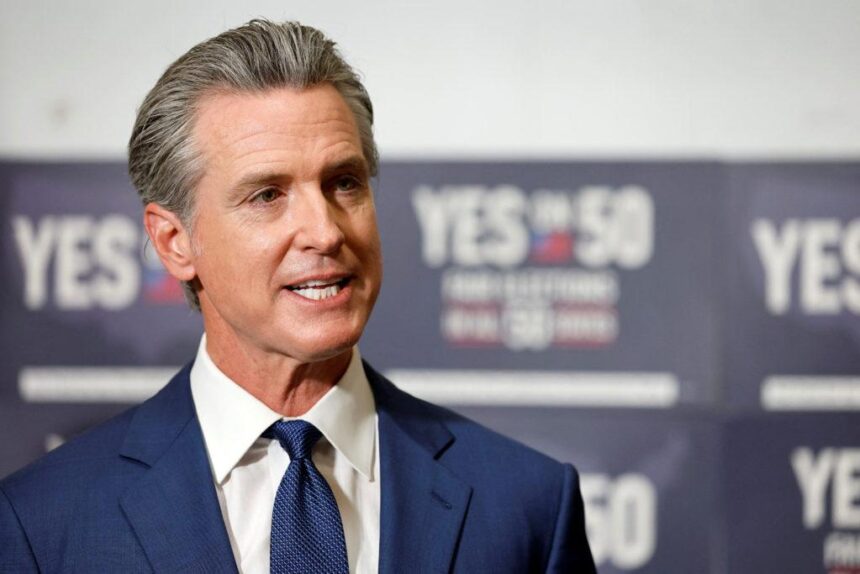In a rapidly escalating funding conflict, California Governor Gavin Newsom has issued a stark warning to the state’s public universities that may comply with former President Donald Trump’s recent threats to cut federal funding over controversial campus policies. Newsom’s pronouncement marks a significant state-level response to the rhetoric surrounding educational freedom and federal oversight, asserting that any university that bows to these pressures could face the withdrawal of state financial support. As the debate intensifies over the intersection of institutional governance, federal influence, and academic freedom, stakeholders from across the political spectrum are closely monitoring the implications of this standoff for higher education in California and beyond.
Newsom’s Standoff with Trump: Implications for Higher Education Funding
Governor Gavin Newsom’s recent ultimatum to California universities has stirred significant debate surrounding higher education funding, particularly in light of threats from former President Donald Trump. By threatening to cut off state funds to institutions that comply with Trump’s directive to withdraw financial support, Newsom is positioning himself as a protector of academic freedom and institutional autonomy. This bold move highlights a growing divide in educational funding policies, stirring concerns about potential repercussions for students and faculty alike. Universities now face the stark choice of either siding with state interests or complying with federal mandates that may undermine their academic missions.
The consequences of this standoff could be far-reaching, potentially reshaping the landscape of higher education funding across the nation. Key implications include:
- Reduced State Funding: Universities may experience severe budget cuts that affect programs, staff, and student services.
- Increased Tensions: The conflict could escalate between institutions and state officials, complicating governance and funding allocation.
- Student Impact: Students may face higher tuition costs or reduced financial aid opportunities if institutions struggle to balance funding sources.
In this evolving situation, the stakes are high. As state leaders and educational institutions navigate these turbulent waters, a careful balance must be struck to protect the integrity of academic environments while addressing the financial realities shaped by political maneuvers.
Impact on University Autonomy: The Challenges of Compliance and Resistance
The battle between state leaders and federal authorities over university funding has reached a critical point as Governor Newsom threatens to cut off financial support to any university that he perceives as capitulating to Trump’s ultimatum. This tension raises essential questions about the degree of autonomy institutions of higher learning can exercise amid conflicting governmental pressures. Universities are caught in a precarious position: adhere to federal directives risk alienating the progressive values that many of their stakeholders espouse, while defiance could jeopardize their financial viability.
Compliance presents a myriad of challenges, not least the potential backlash from students, faculty, and alumni who may view capitulation as a betrayal of academia’s commitment to free thought and inquiry. Alternatively, resistance to federal funding conditions can lead to severe consequences, affecting operational budgets and critical programs. Institutions are now faced with navigating a complex landscape characterized by:
- Political Pressure: Balancing state and federal expectations while keeping their community unified.
- Financial Uncertainty: Developing sustainable funding models that remain independent.
- Institutional Integrity: Upholding their mission against external influences that may compromise educational freedom.
To provide a clearer picture of the current funding dilemmas faced by universities, the following table outlines the potential impacts of compliance versus resistance on different university sectors:
| Impact Area | Compliance | Resistance |
|---|---|---|
| Academic Programs | Funding may decrease for progressive projects | Critical programs may remain funded but risk isolation |
| Student Sentiment | Possible backlash from student body | Support from those valuing academic freedom |
| Faculty Relations | Divisions among faculty on institutional direction | Stronger unity among faculty committed to autonomy |
Strategies for Universities: Navigating Political Pressures While Upholding Values
In the wake of escalating political tensions, universities are increasingly finding themselves at a crossroads where financial support is contingent upon adhering to certain ideological mandates. As state figures like Newsom voice their intent to withhold funding from institutions that align with controversial federal directives, colleges must implement strategies that not only ensure fiscal stability but also uphold their core academic values. To navigate this precarious landscape, universities can adopt the following approaches:
- Engagement and Advocacy: Universities should leverage their influence by actively participating in dialogues with policymakers to advocate for educational independence and secure support for their missions.
- Transparent Communication: By establishing clear channels to communicate institutional values and decisions, universities can foster understanding and solidarity among students, faculty, and the broader community.
- Diversifying Funding Sources: To mitigate dependency on government funding, institutions might explore alternative revenue streams, such as private donations, grants, or partnerships with industry.
Moreover, universities need to offer robust educational frameworks that promote critical thinking and civic engagement. This includes introducing programs that equip students and faculty to engage thoughtfully with the political landscape. Some potential initiatives to consider include:
| Initiative | Description |
|---|---|
| Political Literacy Workshops | Facilitate workshops that educate the campus community on navigating political pressures and understanding their implications. |
| Public Forums | Host public forums that encourage open discussions between faculty, students, and administrators about political challenges facing the institution. |
| Research Incentives | Support research initiatives focused on the impact of political climate on education, thereby contributing to broader conversations and solutions. |
Insights and Conclusions
In conclusion, Governor Gavin Newsom’s firm stance against potential federal funding cuts highlights the ongoing conflict between state and federal educational policies. By threatening to withhold state funds from universities that comply with the Trump administration’s funding threats, Newsom aims to protect academic freedom and institutional integrity in California. This situation underscores the intricate balance that universities must navigate between federal directives and state support, raising critical questions about the future of higher education funding in the United States. As the political landscape continues to evolve, the implications of this standoff will reverberate through institutions across the nation, prompting educators and policymakers alike to reconsider their strategies in an increasingly polarized environment. The coming weeks will be crucial in determining how this conflict will unfold and its lasting impact on the academic community.









